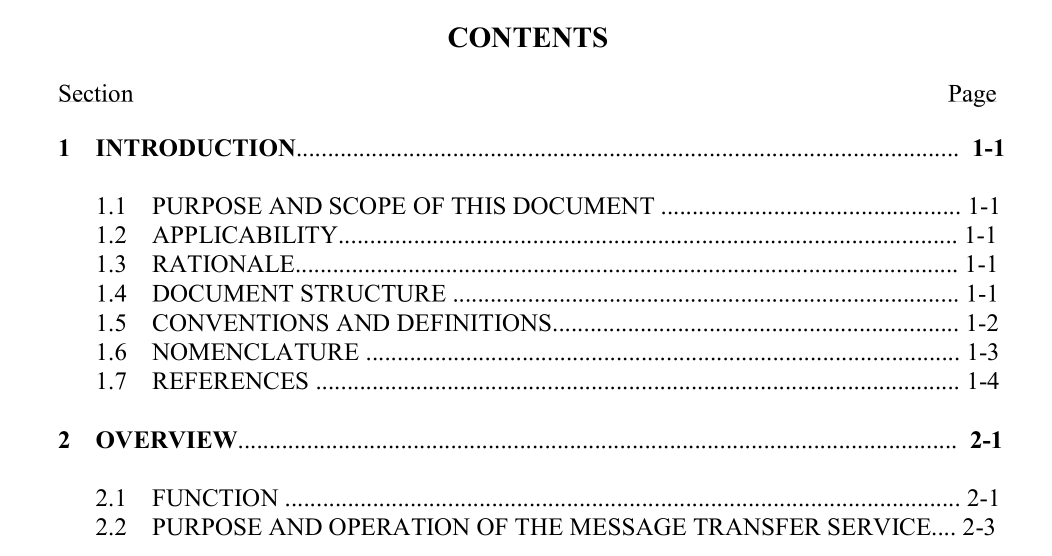ISO 20213:2015 pdf download.Space data and information transfer systems — Spacecraft onboard interface services — Message transfer service
Each message is sent in an asynchronous manner. The source user need not wait for the arrival of the message at the destination user(s) before continuing performance of its functions. Each message is transferred with a SOIS Quality-of-Service (QoS) (such as service class, priority, and/or channel number) specified by the destination user(s) upon registration with the Message Transfer Service. Although isolated from the details of the transfer mechanisms, the users must still know the format of data contained in the message, and the users remain responsible for correctly composing and interpreting those formats. Source and destination users may dynamically be added to and removed from the system at any time. The Message Transfer Service is defined as a restricted subset of the services provided by the CCSDS Asynchronous Message Service (reference [1]), as defined in 3.3. Although the services are defined to be independent of the underlying protocol, it is recommended that the protocol used by the Message Transfer Service be the subset of AMS protocol that is defined in sections 4 and 5. The subset has been defined with the following objectives:
– to provide sufficient functionality for onboard software applications;
– to operate within the environment of onboard software applications (i.e., support timeouts on service invocations and prioritization);
– to provide a mapping onto the SOIS subnetwork services.
From subsection 2.3 of reference [1], the following AMS interactions are deprecated to optional for Message Transfer Service:
– monitoring registrar health (other onboard mechanisms, e.g., centralized Fault Detection, Isolation, and Recovery [FDIR]), may be used to detect the failure of the registrar);
– configuration service fail-over (other onboard mechanisms, e.g., centralized FDIR,may be used to restart a failed configuration service on a redundant data system).Finally, the following interactions, optional in AMS, are not used in Message Transfer Service:
– configuration resynchronization (sufficient control of the state of a spacecraft should be maintained to negate the need for a periodic resynchronization, with its inherent complexity);
– subject catalogue (not required by SOIS).
4 PROTOCOL SPECIFICATION
4.1 GENERAL
While multiple protocols may be used to support the Message Transfer Service, only one protocol, a subset of AMS defined in 4.2, is currently recommended by this standard. 1 It is recommended that the subset of AMS protocols defined in 4.2 be supported by the SOIS Subnetwork Packet Service (reference [2]). The priority parameter used on the MTS service interface refers to the priority at which the message is delivered to the user. Where a concept of priority is supported by the underlying transport service, this priority parameter shall be mapped onto the underlying transport service’s priority.
ISO 20213:2015 pdf download
